Derain variegated: description of the variety, features of planting and care

Derain variegated is an ornamental plant that is rapidly gaining popularity among the owners of private houses and cottages. It looks very impressive, so the culture is often used in landscape design, and the shrub is attractive both in summer and winter, and besides that, it is unpretentious and resistant to the most difficult climatic conditions.
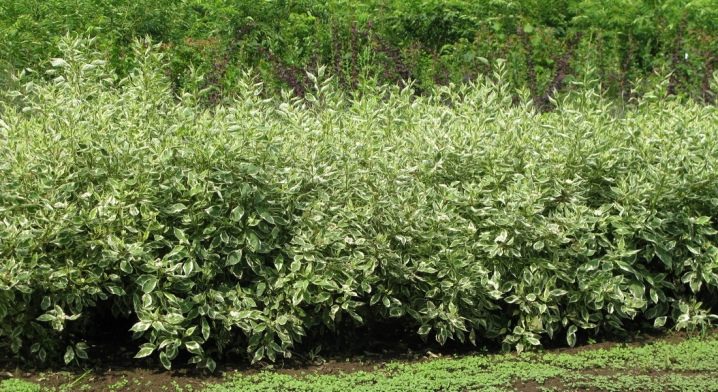
Description of the variety
The variegated dogwood is one of the brightest achievements of breeders; this plant does not grow in its natural environment. The species was obtained on the basis of a white deren from the cornel family. Such a plant has green monochromatic leaves, but through the efforts of scientists, several bright colors were added to them, as a result, a border of yellow, pink, golden and white-beige color appeared on the foliage. The shape of the leaves is heart-shaped, the edge is even, the main vein is clearly pronounced.
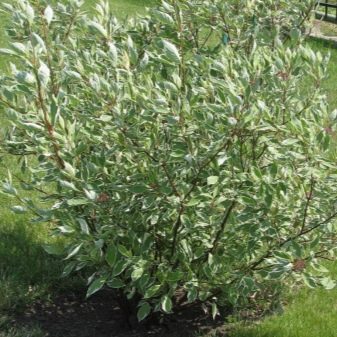
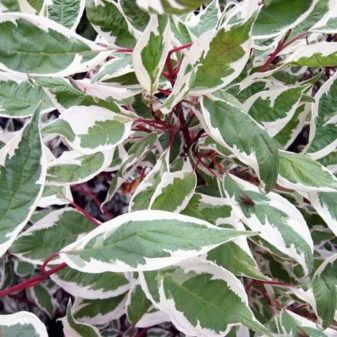
Derain variegated is a shrub or small tree, grows up to 2.5-3 meters in height, while the crown reaches 4-5 meters in diameter.
The bark has a rather unusual color - coral or saturated brick, which gives a glossy shine in the sun. That is why the plant is so popular with landscape designers. It does not lose its decorative and exotic character even in the winter months, having lost all its foliage. At this time, its red branches look especially beautiful against the background of sparkling white snow.
The culture bears fruit twice a year. The first time it blooms at the end of May - the first half of June, and the berries appear after 1.5 months. The second wave occurs approximately in the last decade of August - early September, respectively, the plant gives the second harvest of ripe berries already in October. They look extremely stylish against the background of yellowing and purple foliage. The flowers of the tree with thyroid inflorescences are 4-5 cm in size, the fruits are blue and bluish, but for all their attractiveness they are completely inedible.
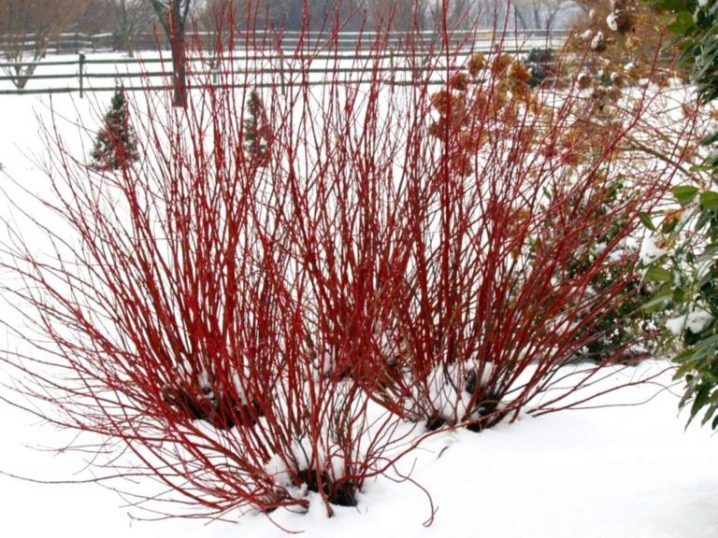
A distinctive feature of deren is the increased growth rateas well as the ability to tolerate any trim, even radial, without any damage. Moreover, the more often such procedures are carried out, the thicker the crown becomes. It is this feature that is used when arranging hedges. It should be noted that pruning is the main part of the care of the turf, since the branches that grow uncontrollably look extremely untidy and unattractive.
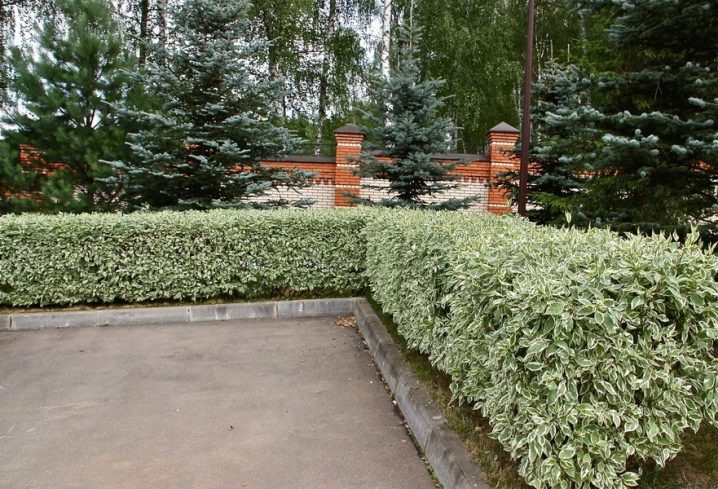
The plant is absolutely undemanding to care, the culture can adapt to almost any habitat, the turf is unpretentious neither to the composition nor to the structure of the soil, it can withstand even the most severe Siberian frosts and grows easily in the southern regions. There are several varieties of deren, so every gardener will always find one that suits his taste. They all differ in their appearance, but at the same time each one looks invariably impressive.
- "Elegantissima". It is one of the most common varieties of deren and is often planted in single plantings. The shrub reaches a height of 2.5 m, shoots are rich coral, straight, young foliage is green with a slight bluish tint, the border is milky white, the leaves are pointed and slightly concave inward.

- Sibirica Variegata. This is a low-growing shrub that grows up to 1.5 m. Shoots are bright scarlet, almost bloody.The leaves are elongated, light green with a creamy edging. With the onset of autumn, they change their shade to bright purple with a pronounced lilac tint. The berries are dark blue, covered with a thin layer of "waxy" bloom.
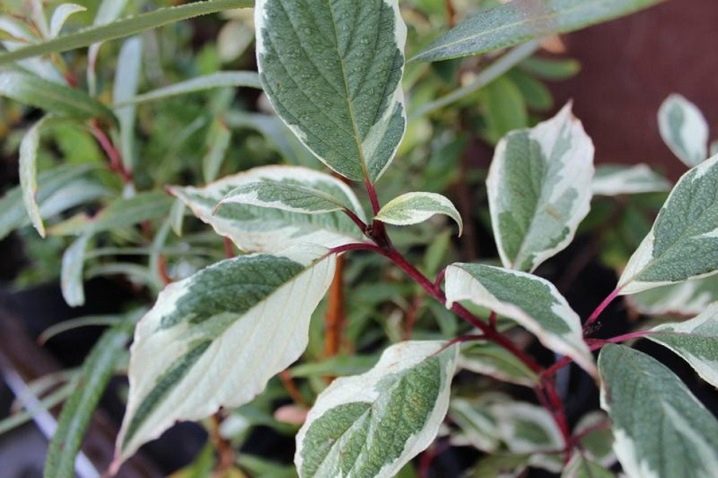
- "Gouchaultii". Squat, but very massive shrub. The height reaches 1.5 m, the shoots are red, dull, very flexible. The leaves have a lemon-yellow border. If such a plant is planted in open sunny areas, then the foliage begins to cast pink. The fruits are lilac.
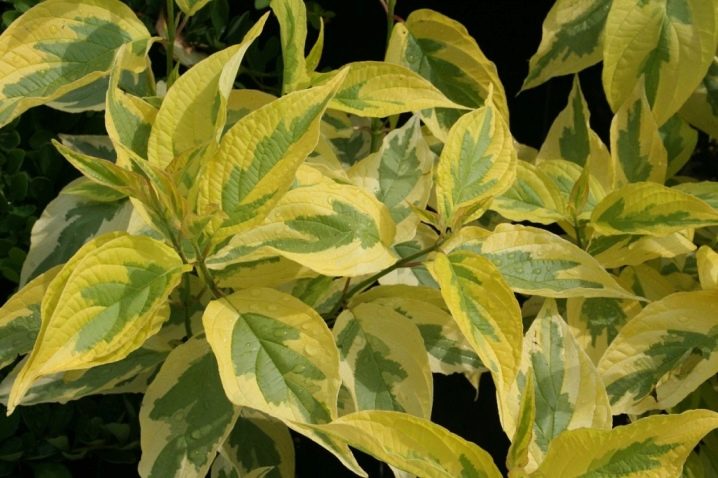
- "Cream Cracker". Quite an exquisite, upward shrub, from which standard trees are usually formed. The edging on the leaves is light beige, in autumn it changes its color to lilac.
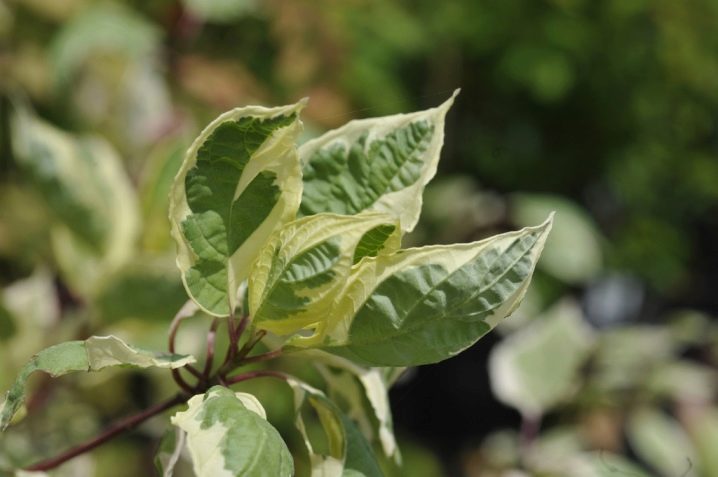
- "Spaethii". This variety was bred about a hundred years ago. The leaves have a golden yellow edging that sometimes covers most of the plate. Young leaves are orange, and in autumn they change color to purple, almost purple. The plant grows rapidly - the annual growth is 20-25 cm, it is resistant to frost and heat.
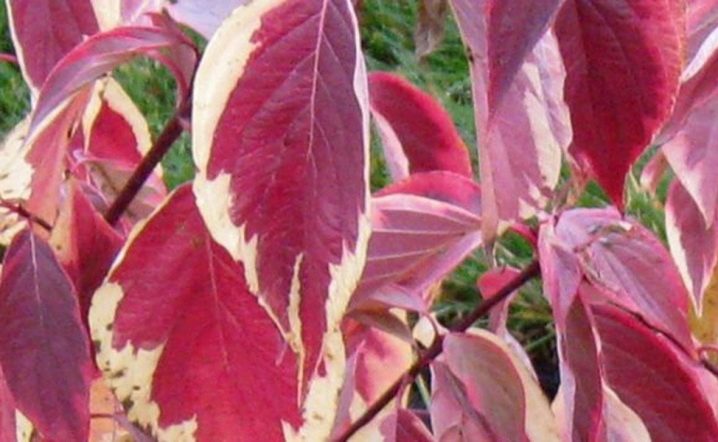
- "Argenteomarginata". A fairly tall tree, growing up to 3 m, the leaves are elongated (up to 10 cm), silvery yellow, the border is milky. In winter, the foliage changes color to lemon or brick. The berries are dark yellow with a slight bluish tint.

- "Ivory Halo". A low-growing plant, does not grow more than 1.5 m, the crown is spherical, and takes the desired shape even in the absence of pruning. The foliage is light green, the edging has a shade of eggshell. Scarlet bark, as it develops, changes color to brick.
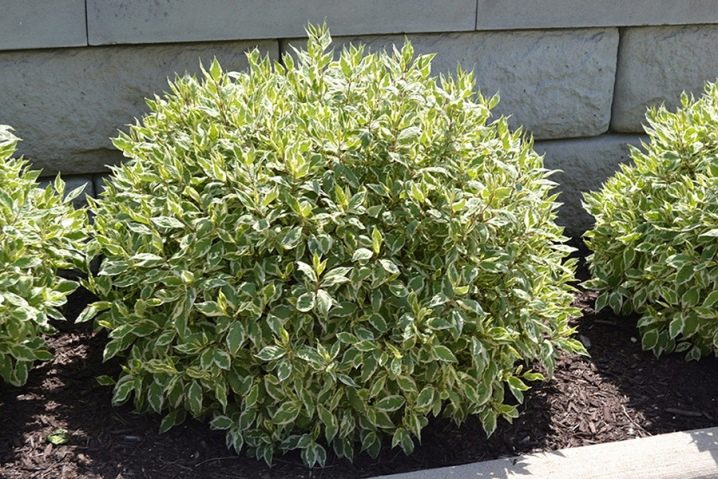
- "Kernii". The shrub grows up to 2-3 m, has an unusual burgundy bark, leaves of lime-lemon color, a border of bright yellow and beige tint.
- Westonbirt. The shrub reaches a length of 1.5 m, is distinguished by pink leaves and coral shoots.


- A very popular variety - "Compress" - it has crimson shoots and red leaves, so it has a very decorative and exotic look.
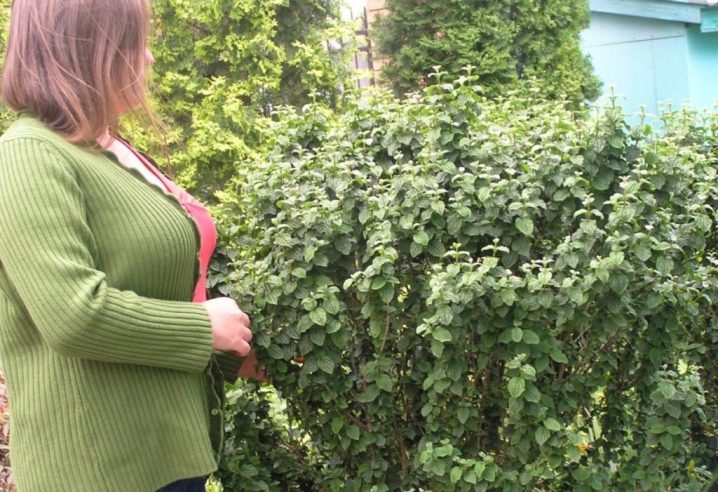
Landing subtleties
It will be correct to plant grass in the spring, since in this case the plant will have the opportunity to grow up over the summer, get stronger, and already prepared and full of strength to go to the first winter. In order for the dogwood to grow healthy and attractive and delight its owners for many years, it is necessary to choose a planting site, prepare a plot of land and purchase suitable seedlings. It is best to give preference to sunny areas. The plant can develop in the shade, but in this case, the color of the leaves loses its brightness and decorative effect. Also, do not plant a bush in places with a high level of groundwater - excess moisture leads to decay of the root system, which, in turn, leads to the death of the plant.
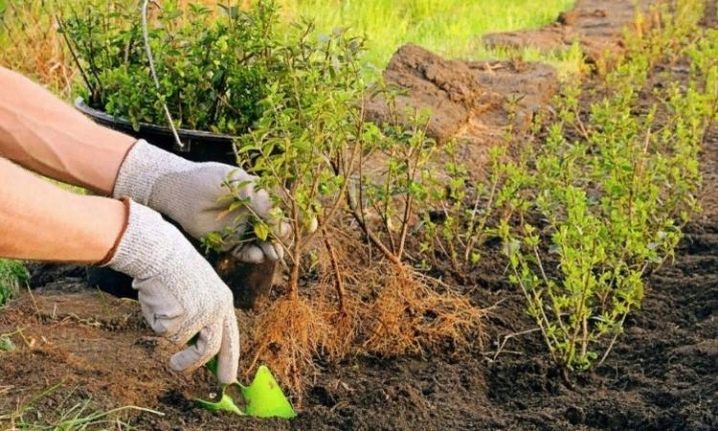
The seat should be well prepared. First you need to remove all the weeds growing there, dig up the ground and apply fertilizer. If the place is swampy, then you should arrange a drainage system in advance. Derain grows well in sandy loam soil that allows water to pass through. The best option would be to use acidified soil with a small amount of lime, moist fertile soils are also suitable.
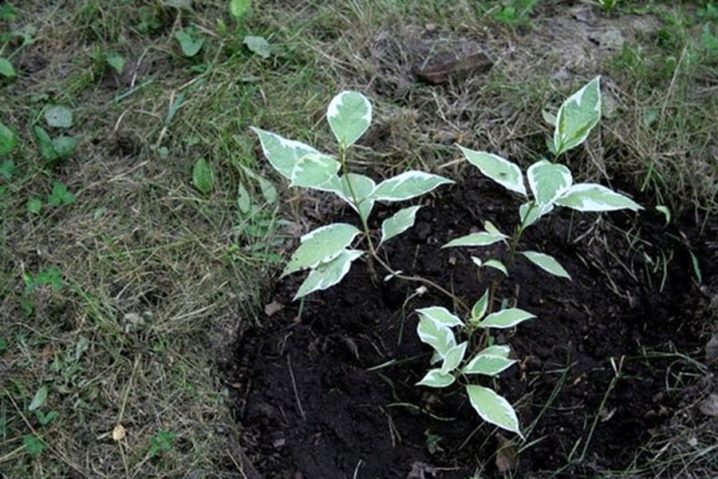
It is best to use seedlings up to 4 years old, obtained from cuttings, as the main planting material. In this case, the young plant will fully acquire all the features and characteristics of the mother plant. Only healthy seedlings should be planted without visible damage to the root system and stem. The foliage should be rich in color. If the roots of the tree are windy, then before planting they should be placed in a bucket of water for several hours. If desired, you can add a little root stimulant solution.
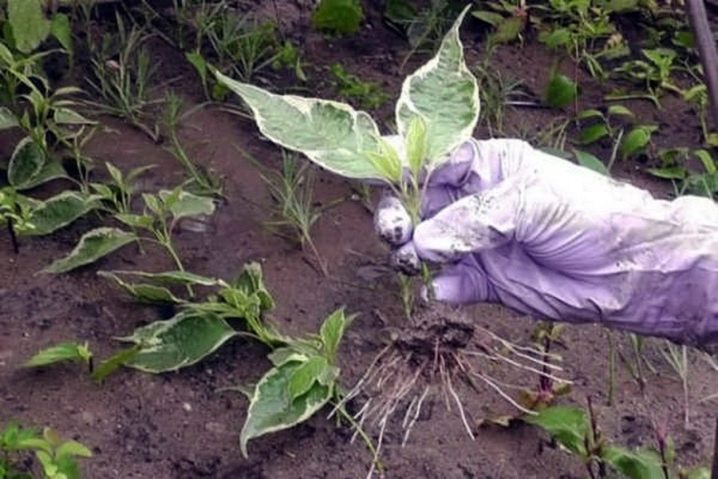
The planting procedure is as follows.
- The topsoil should be removed from the plot of land where the turf is planned to be planted. The removed soil is mixed with sand and humus in equal proportions.
- Then fertilizers are applied.It is best to take granular combination preparations at the rate of 100 g per 1 sq. m. plot.
- The pit is usually made large and deep. If the soil is swampy, then a layer of brick or medium-sized stones must be placed on the bottom.
- The bottom of the planting pit is covered with humus and sand and about 5-7 liters of water are poured into it.
- The seedling is placed in the hole, the roots are gently straightened and covered with the prepared soil mixture to the level of the root collar. If it is located too high, then the bush will give too many weak shoots, which will inevitably lead to the death of the plant.
- For group planting, a distance of 1.5 m should be observed between the bushes.
- After the end of planting, the earth is tamped, the surface is covered with mulch from sawdust, pine needles and peat.
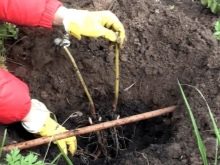
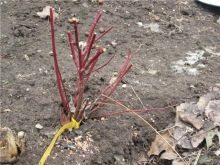
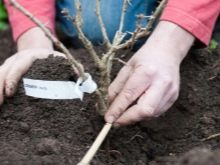
Breeding rules
Derain can be propagated in several basic ways.
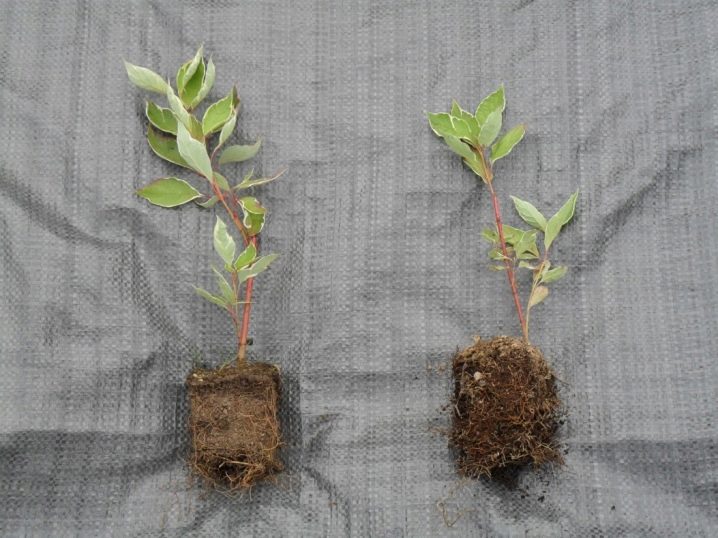
Cuttings
Cuttings are harvested at the very beginning of summer. You should use last year's, not young branches, always with dense wood. In this case, you should carefully monitor that each shoot has at least three buds. All but the topmost leaves should be removed. The blanks are dipped in water and kept until roots appear. It is advisable to add a little of the drug there, causing increased root growth.
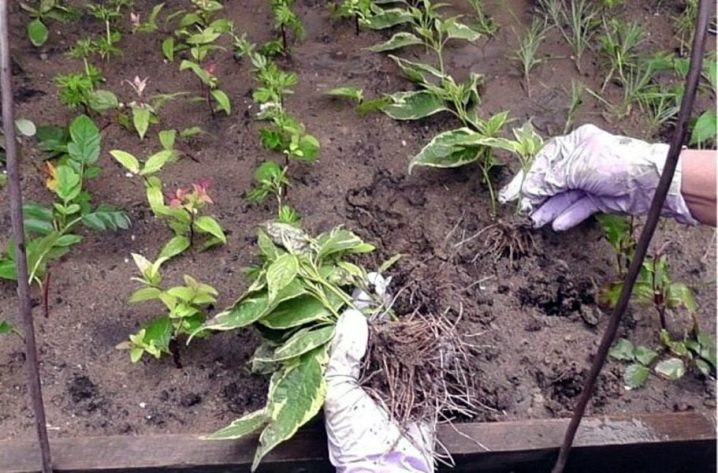
Cuttings should be planted in rows in a pre-made greenhouse with a slope. Water them as needed, but abundantly. If the air is dry or there is an excess of sunlight in the greenhouse, then additionally the cuttings should be sprayed with water. With proper care, they take root by the fall and in the spring such cuttings can already be moved into open ground.
By dividing the bush
If desired, planting material can be formed by dividing an adult plant. For this purpose, it is better to choose healthy and strong seedlings. First, they need to be dug out, shaken off all the ground from the roots, then using a shovel or a sharp knife, the root system is divided into two parts. Each part should be buried separately, after placing mineral and organic fertilizers on the bottom of the hole.
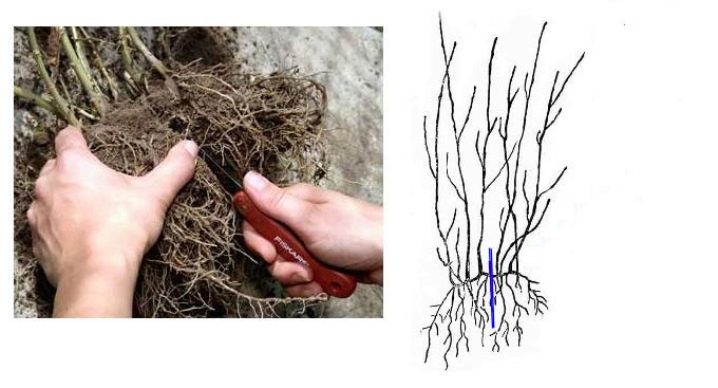
Layers
Rooting by layering is another method of turf propagation. The branches of the shrub grow quite low to the ground and bend well, they can be easily and simply rooted. In the spring, the lowest branches are buried in and well fixed. A year later, when the seedling grows roots, it is placed in a permanent place, and after another six months, good roots are formed at the sod.
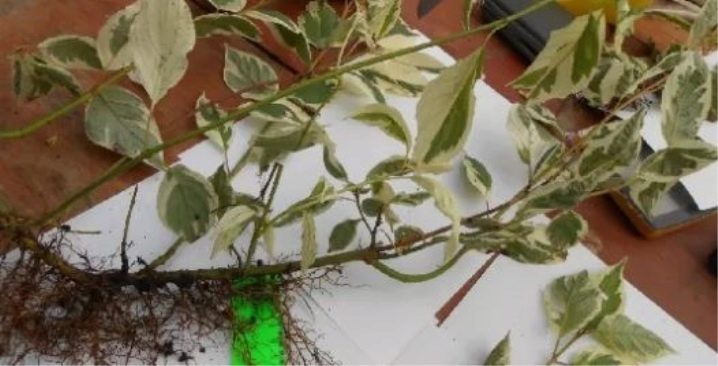
Seeds
When the flowering period ends, fruits begin to appear on the trees, and seeds are placed inside them. They are harvested in autumn and planted before the onset of the first frost. If you intend to plant seeds in the spring, then you need to keep them for about 6 months in a dark cool place at a temperature of about 3-5 degrees. After such hardening, they sprout much better, and young trees are resistant and unpretentious. The latter method is considered the most expensive. As a rule, it is used only by breeders planning to develop new varieties.
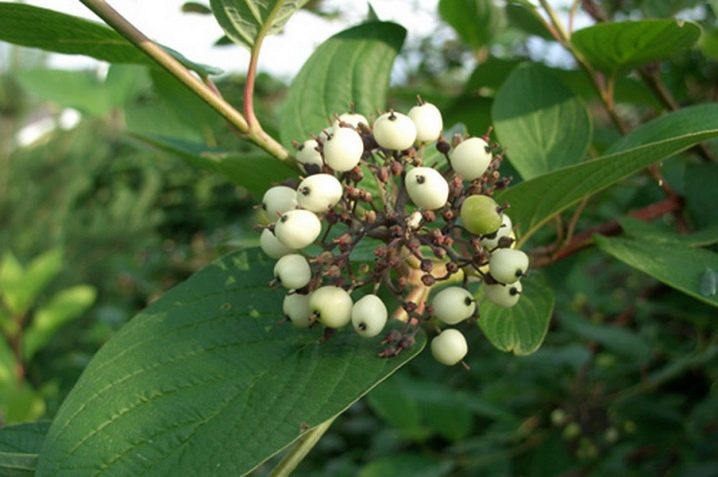
Care features
Despite the fact that the lawn is quite unpretentious, like any other plant, it requires some care, which boils down to watering, fertilizing and forming a crown.
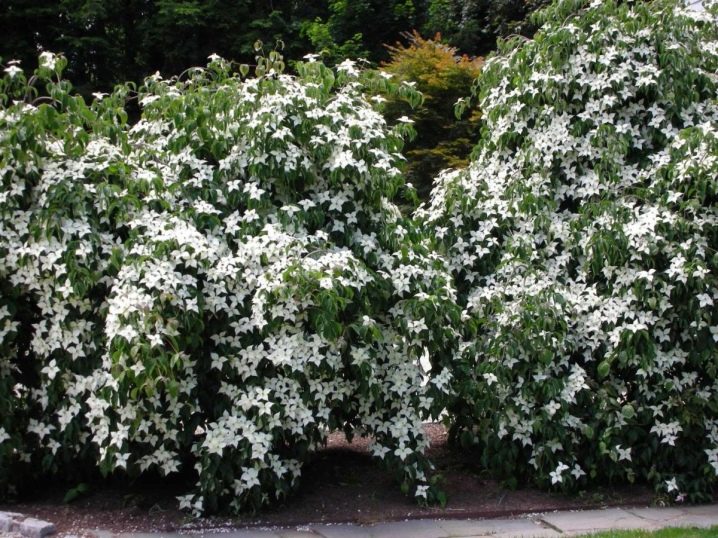
Watering
Derain should be watered once a month, and about 15-20 liters should be poured under each plant. On hot dry days, the frequency of irrigation should be increased, and in the rainy period, on the contrary, reduced. Intensive soil moisture is required only for young seedlings up to the third year of life.
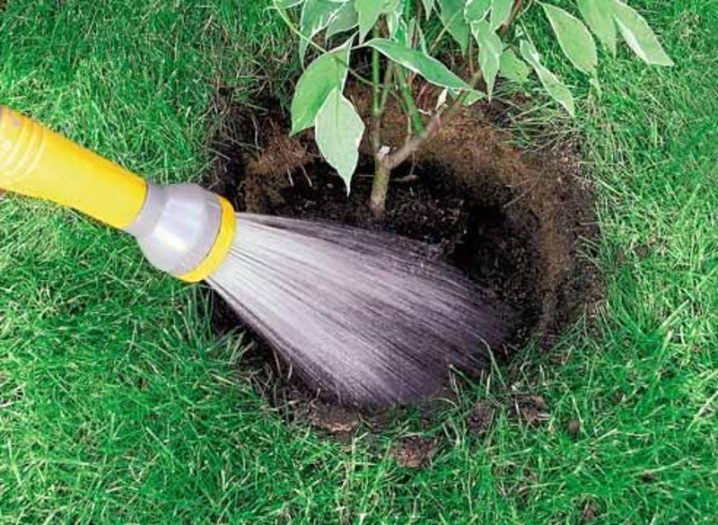
Fertilizer
The plant is not demanding for feeding, but in order for the derain to reveal all the saturation of its shades, you cannot do without fertilizers. Twice a year, the bushes are watered with a solution of mineral preparations based on a proportion of 150 g for each plant. It is better to do this in spring and autumn, and in summer it is necessary to introduce organic compounds, for example, humus or compost.
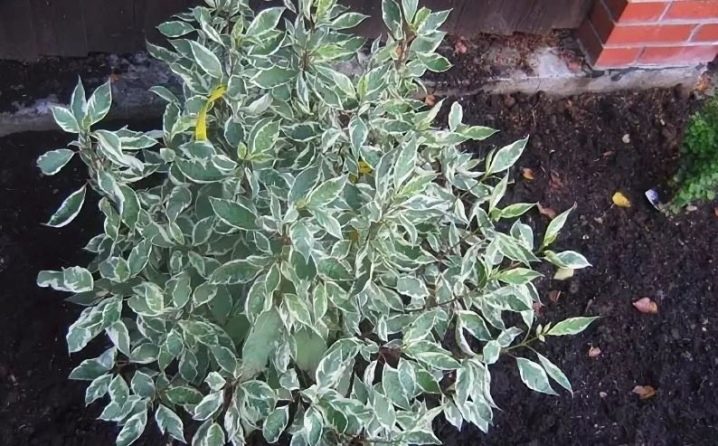
Pruning
Pruning is an important step in sod care. It is best to carry out these manipulations in early spring, optimally in March. During this period, you need to cut off all the shoots that have outstripped the rest of the branches in growth. If the turf on your site is used to create a hedge, then pruning is carried out twice a year, for example, in mid-July and early September.
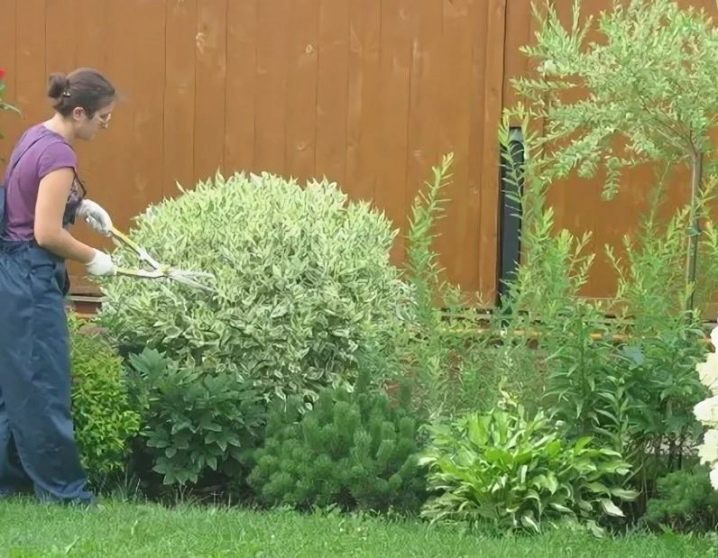
Preparing for winter
Derain perfectly tolerates even the most severe frosts, but this applies exclusively to adult plants. Young bushes often die under the influence of low temperatures, so they need to be well covered for the winter. For this, agrofibre or ordinary bags are used. Plants are wrapped quite tightly, be sure to fix the canvas near the base.

Diseases and pests
Often, gardeners are faced with a situation when the leaves of the variegated turf turn brown. This sign directly indicates that the bush has been infected with a fungal infection. To combat it, you can use drugs "Topaz", "Vectra" and "Hom". During processing, it is necessary to significantly reduce the number of waterings.

The second common problem of deren is a decrease in leaf tone. As a rule, the reason for this is reduced to moisture deficiency. In this case, after good watering, the plant comes to life.
Pests bypass the lawn, the only exception is aphids. However, getting rid of it is quite simple - for this, the bush is sprayed with a strong solution of laundry soap, left for 40-50 minutes and washed with water from a hose. After a day, the procedure can be repeated. If the invasion is massive, then insecticidal preparations should be preferred.
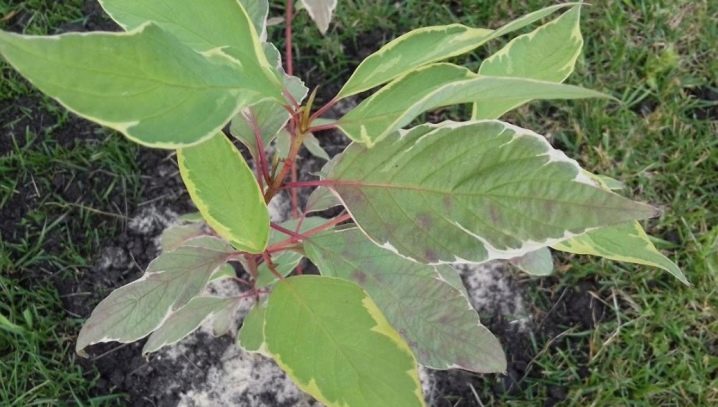
Application in landscape design
Derain is recognized as one of the most popular plants in landscape design, and there are quite a few ways to use it. For example, a shrub is very often planted as a background for a bright flower bed, then the flowers in it will look very impressive. If you plant a juniper, as well as barberry, buldenezh or roses near the deer, the composition comes out very bright and pleasing to the eye. The shrub is often planted near trees, the branches of which start very high. At the same time, its bright shoots and leaves mask and decorate the trunk, and in addition, they protect from winds and drafts.
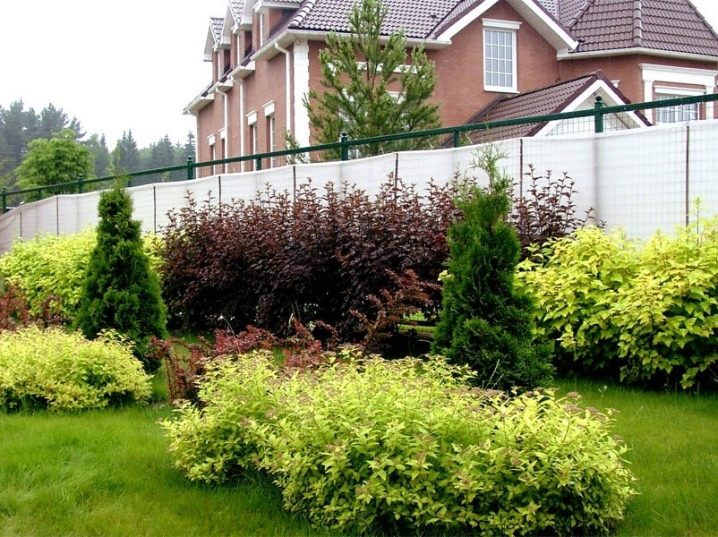
Bushes often become an integral part of large mixborders, but the most widespread use of turf is in the formation of hedges. The culture is planted on the ground in the form of terraces. Usually they form a stepped or even hedge. The combination of deren with other plants, for example, with needles, looks very stylish - light green leaves look good with thuja, juniper or spruce.
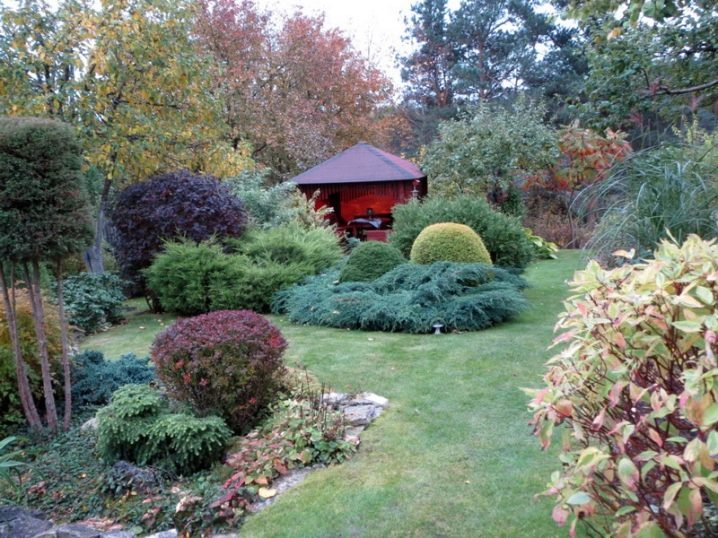
For information on how to use variegated dogwood in gardens, see the next video.

































































The comment was sent successfully.